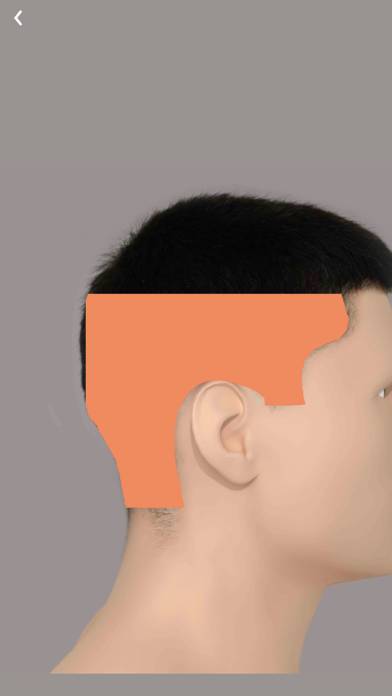How to Delete Fade Calculator
Published by: Nikolay GeneralovRelease Date: May 11, 2020
Need to cancel your Fade Calculator subscription or delete the app? This guide provides step-by-step instructions for iPhones, Android devices, PCs (Windows/Mac), and PayPal. Remember to cancel at least 24 hours before your trial ends to avoid charges.
Guide to Cancel and Delete Fade Calculator
Table of Contents:











Fade Calculator Unsubscribe Instructions
Unsubscribing from Fade Calculator is easy. Follow these steps based on your device:
Canceling Fade Calculator Subscription on iPhone or iPad:
- Open the Settings app.
- Tap your name at the top to access your Apple ID.
- Tap Subscriptions.
- Here, you'll see all your active subscriptions. Find Fade Calculator and tap on it.
- Press Cancel Subscription.
Canceling Fade Calculator Subscription on Android:
- Open the Google Play Store.
- Ensure you’re signed in to the correct Google Account.
- Tap the Menu icon, then Subscriptions.
- Select Fade Calculator and tap Cancel Subscription.
Canceling Fade Calculator Subscription on Paypal:
- Log into your PayPal account.
- Click the Settings icon.
- Navigate to Payments, then Manage Automatic Payments.
- Find Fade Calculator and click Cancel.
Congratulations! Your Fade Calculator subscription is canceled, but you can still use the service until the end of the billing cycle.
How to Delete Fade Calculator - Nikolay Generalov from Your iOS or Android
Delete Fade Calculator from iPhone or iPad:
To delete Fade Calculator from your iOS device, follow these steps:
- Locate the Fade Calculator app on your home screen.
- Long press the app until options appear.
- Select Remove App and confirm.
Delete Fade Calculator from Android:
- Find Fade Calculator in your app drawer or home screen.
- Long press the app and drag it to Uninstall.
- Confirm to uninstall.
Note: Deleting the app does not stop payments.
How to Get a Refund
If you think you’ve been wrongfully billed or want a refund for Fade Calculator, here’s what to do:
- Apple Support (for App Store purchases)
- Google Play Support (for Android purchases)
If you need help unsubscribing or further assistance, visit the Fade Calculator forum. Our community is ready to help!
What is Fade Calculator?
Fade calculator demo | Калькулятор фейда:
My name is Nikolai Generalov. I am the author of the manual “Fade calculator”. This manual is a handy tool which will help you to achieve more detailed and precise transitions in fade haircuts.
First, let me explain my understanding of the word “fade”. Smooth transitions in men’s haircuts have been around for quite a long time. Since hair clippers came about, hairdressers have been able to cut hair on the temples and the back of the head to the minimal length, thus giving a haircut a refined look. This exquisite feature of a haircut showed that its owner paid regular visits to the hairdresser and that, in its turn, was an infallible indicator of affluence and tidiness.
Back in the day, seamless, consistent transitions were a groundbreaking achievement in classical men’s haircut. This feature became an integral part of a military haircut and was specifically described in written regulations of armed forces in all developed countries.
In handbooks of the 20th century a seamless transition was understood as blending the baseline of a haircut to skin while the primary goal of the haircut was to conceal any irregularities of the skull structure. Some of the books briefly mentioned a “shadowy gradient” suggested to be done where possible.
Additionally, transitions had a standard layout: long to short, starting at the top of the head. This was due to the cutting technique: the blade slid through the hair in the direction opposite to hair growth. The result was neat and clean and it only took a few strokes with the shears to create a smooth, even transition between longer and shorter hair.
I am drawing your attention to the fact that all textbooks of the 20th century described fading techniques applicable to Caucasian hair exclusively, and did not address the specifics of working with other types of hair.
For instance, it is very hard to find any information on curly, short and dense Afro-textured hair. This hair type doesn’t require to balance irregularities of the skull by adjusting the shape of the haircut. Instead, we should aim to create a shadowy gradient that smoothly blends to the skin. This is what I refer to when I use the word “fade”. It is also done with clippers, but the slide-through move, which is used to create fade on Caucasian hair, will not help to achieve the desired effect on Afro-type hair.
Consequently, a different fading technique was created by ethnic barbers. The idea was to establish several fade lines and then cut hair using different guard sizes starting with a lower-numbered guard, so that the hair progressively got longer.